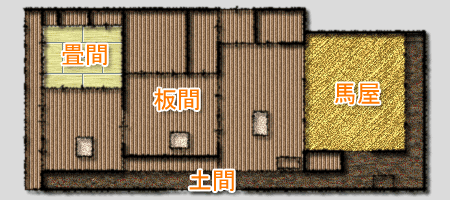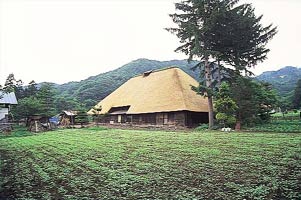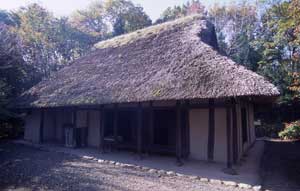In a private house, call a common rectangular house. Many private houses in the prefecture, with the exception of bent houses, have many open-room, multi-storey direct shops, and most of the former Sendai Territories in the southern part of the prefecture and the Nicho and Kuchinohe areas. Large-scale Naoya includes a stable in the main house, but most of Naoya has a stable, a storage shed, a wooden hut, a toilet, a bathroom, a storehouse, an Itakura, a Misokura, etc. as attached buildings. The shape of the roof is different from that in the northern part of the prefecture, the one with smoke, the one with a smoke, and the one with a gull, in the southern part of the prefecture, the gull, the piece with a crest, the piece with a crest, the rocking weeping gull are many.

Representative direct house in the prefecture
Park family home

[Location] Ichinohe Town Kotoriya
This is a large private house at the end of the Edo period, the largest in the prefecture. Arrange the upper, middle, and lower three-seatings from the back to the front, then place the next large residence on the front, and intervene in the back of the storage room and several small bedrooms. It has the form of characteristic floor plan of the Ninohe region.
Fujino family

[Location] Morioka City (Prefectural Museum)
Originally, Esashi City (now Oshu City Esashi Ward) An important cultural property designated by the country that has been rebuilt. It is a flat house type widely distributed in the Sendai territory, which is relatively small for this region.
It is believed to have been built in the late 18th century.
